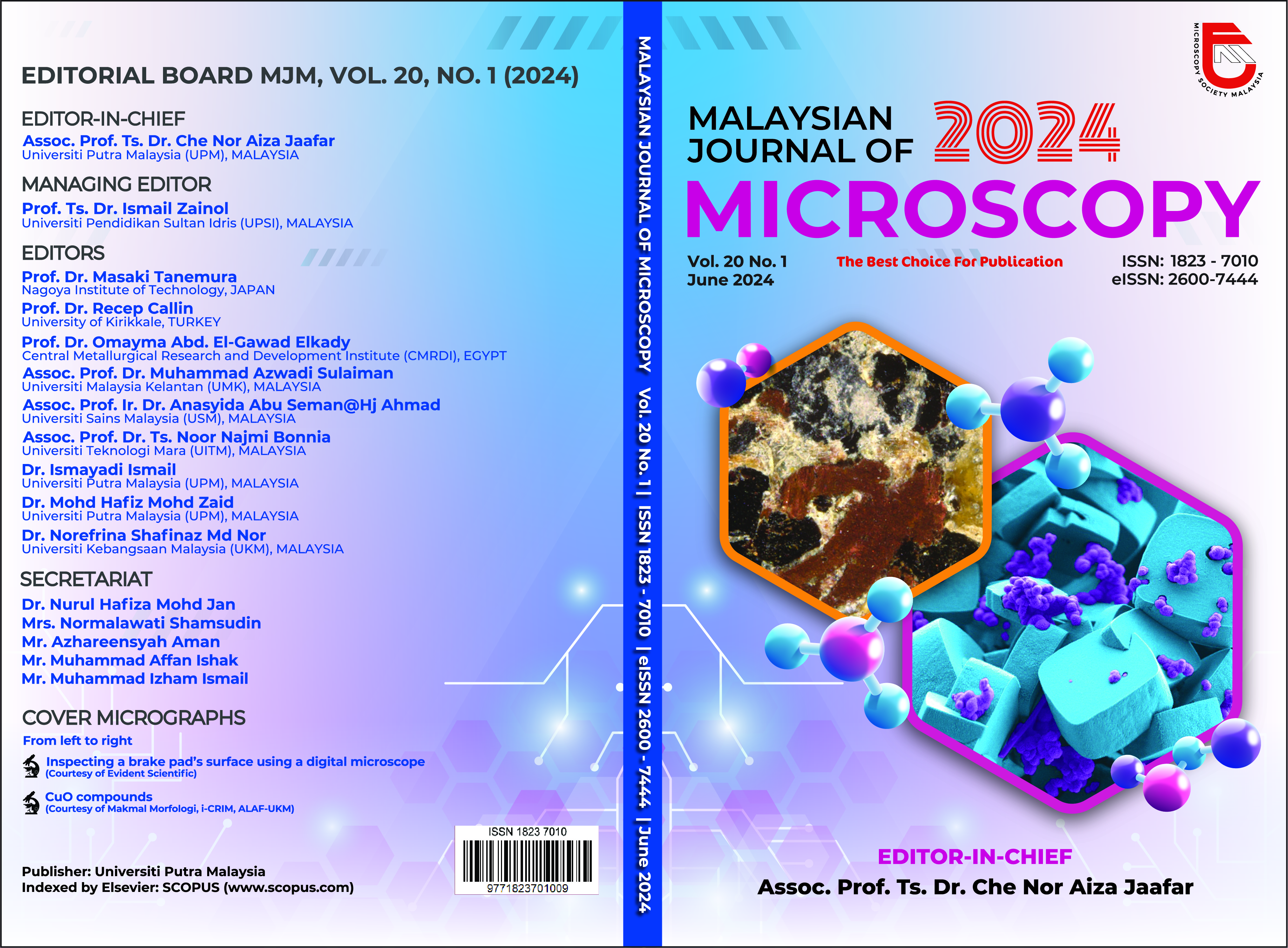SURFACE MODIFICATION OF IRON OXIDE-MWCNTs NANOCOMPOSITE FOR POTENTIAL APPLICATION IN PHOTOCATALYSIS
Abstract
Iron oxide is a compound that exists in several forms such as FeO, Fe2O3, and Fe3O4. In this study, iron oxide was incorporated with multi-walled carbon nanotubes (MWCNTs) to create a nanocomposite material for photocatalysis. The interaction between carbon and iron oxide is to investigate to improve the efficiency and stability of nanocomposites as photocatalysts. This nanocomposite is made by depositing MWCNTs on an iron sheet after being oxidized at 400 °C for 60 or 120 minutes. By using a spin coating technique, carbon nanotubes weighing between 0.15 and 0.50 mg were coated on the iron oxide that is formed after the oxidation process. The morphological and structural characteristics of this nanocomposite are characterized using different characterization techniques, including Raman spectroscopy, UV-Vis spectroscopy, field emission scanning electron microscopy (FESEM), and X-ray diffraction (XRD). Based on the XRD analysis, the α-Fe2O3 structure was formed and FESEM images have shown that MWCNTs were successfully deposited onto the surface of α-Fe2O3 nanoleaves. When the photocatalytic activity of the nanocomposite was examined using aqueous methyl orange (MO), it was discovered that the quantity of MWCNTs deposited on the α-Fe2O3 nanoleaves affected the effectiveness of MO dye. After five hours of exposure, a composite with 0.25 mg of MWCNTs demonstrated superior photocatalytic activity, degrading MO dye by 64%. On the surface of the nanocomposite, MWCNTs aid in the production of reactive radical species like OH• and O2• and lessen the recombination of photo-generated charge carriers. Because of this synergistic mechanism, the photocatalytic process is more efficient, which makes iron oxide nanocomposite a practical material for a range of environmental application.


